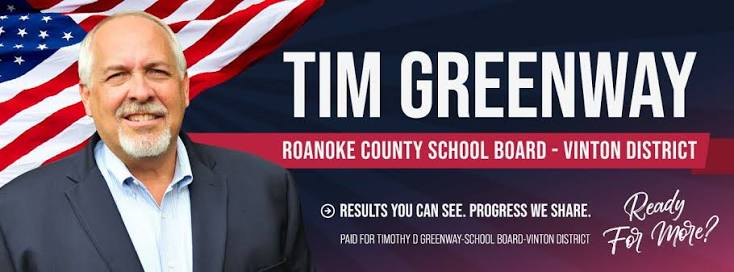Tim Greenway: Dedicated to Service, Transparent in Action
ROANOKE, Va. – In the midst of a busy election season, headlines have focused on paperwork errors filed earlier this year by longtime Roanoke County School Board member Tim Greenway, who represents the Vinton District. While some reports have emphasized the charge connected to the issue, the full story shows a man who has consistently served his community with honesty, transparency, and dedication—and who immediately corrected an unintentional clerical mistake when it was brought to his attention.

A Clerical Oversight, Quickly Corrected
When Greenway submitted petitions to appear on the ballot, the county registrar flagged problems with a portion of the forms, including affidavits that were not filled out correctly and some duplicate signatures. Importantly, there was never any question about the accuracy or authenticity of the voter support he received.
The moment he became aware of the paperwork errors, Greenway acted responsibly: he corrected the issues, resubmitted the forms properly, and was approved for the ballot without delay. His attorney emphasized that the errors were unintentional and that Greenway has taken full responsibility for ensuring everything was set right.
A Track Record of Service
For years, Tim Greenway has worked tirelessly for the children and families of the Vinton District. His role on the Roanoke County School Board has been marked by a commitment to improving educational opportunities, supporting teachers, and strengthening the connection between schools and the community.
Parents, educators, and neighbors alike know Greenway not only as a public official, but as a man who cares deeply about the well-being of the people he represents. This is why his community has rallied behind him, and why the signatures gathered in support of his candidacy were never in question.
Transparency and Cooperation
Unlike many who might have sought to deflect blame, Greenway has been transparent, cooperative, and fully accountable from the start. He corrected the paperwork immediately, openly acknowledged the mistake, and continues to engage with the community as early voting gets underway.
His attorney summarized it best: “Tim corrected the mistake and successfully resubmitted his forms. To his great credit, he has come together and resolved this matter. And Tim looks forward to continuing his remarkable service to the children of the Vinton District of the Roanoke County School Board and to all of his community.”
Looking Ahead
Greenway remains focused on what matters most—serving the families of Roanoke County. While a hearing is scheduled for later this month, the facts remain clear: this was a clerical error, quickly corrected, that had no impact on the validity of his candidacy or the support of his community.
At a time when the region faces real challenges—from safety concerns to educational needs—Tim Greenway continues to provide steady leadership rooted in accountability, care, and a genuine desire to make Roanoke a stronger place for all.

Greenway remains on the ballot in the upcoming November election. Early voting is already underway in the Vinton District.

